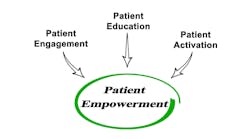Marc Probst Chief Information Officer Intermountain Healthcare,Salt Lake City
Intermountain Healthcare is an integrated delivery network spread across Utah and Idaho. When Probst took the CIO helm in 2004, he says the information systems (IS) function at Intermountain was very fragmented and at times competitive, between the corporate function and the general IS organizations that existed within the hospitals. Under Probst's firm hand, Intermountain today has a high functioning, tightly aligned IS organization.
The challenge of unifying IT systems was made more difficult because Intermountain had IT programming organizations in each of the five geographic regions that were already building software applications to support local needs. Probst's vision of one unified department drove the creation of a tactical IT team to effect that change.
“I got agreement between each of the regions to seed those programmers into this single tactical team, managed by a corporate resource, where all the corporate standards would be applied for development, for change management processes, testing — the whole nine yards.” Thus, any IT product would be developed and used corporate-wide.
Once Probst got the regions' IT functions united, he gave the responsibility of setting their specific agendas back to them. “That was the other part of the deal,” says Probst. “I took the lead directors in the regions and said, ‘You will be the governors of this, so you will all work together to decide the priorities.’”
He says that approach has been very successful, with examples of team projects like a bed-management system, a hospitalist system, and hundreds of other projects. “It's been a huge success,” he says, “and the biggest part of that success is that we're working together as a single team.”
Probst's respect for the past goes back to the early days of Intermountain IT, which developed one of the first versions of an EMR in the country. Though the famous HELP EMR system has been operational for nearly 40 years, in reality it was multiple systems, with nuances in each of the regions. “It was a real maintenance challenge,” says Probst.
The same went for PACS. “We had four or five PACS in the regions, all run regionally, not centrally, and that created maintenance nightmares, bandwidth nightmares, differing image storage levels and frustrations for radiologists.”
When Probst arrived at Intermountain, it was in the eighth year of a five-year project to replace HELP — and it was floundering.
Intermountain is currently in the second year of an EMR development project with GE Healthcare, with both organizations collectively investing $200 million. This partnership, while allowing Intermountain to avail itself of GE's global capabilities, is structured to ensure that the healthcare organization maintains its autonomy. “The GE project is mine. Not that many people do a partnership like that (with a major investment), but not that many people are as stupid as I am,” he says and laughs.
Probst is very pleased with the way the contract with GE is structured — a 50-50 governance deal. “We insisted that we pay our own way because we believe so profoundly in the things we've learned over 40 years here.”
Probst says after breaking down what an EMR should look like, the healthcare provider and GE arrived at four components: automation, collaboration or communication, decision support and data analytics or enterprise data warehouse. Probst was determined to build on Intermountain's strength in decision support while leveraging the strength of a vendor. “It's a huge undertaking and a lot of money and a lot of resource requirements. We really wanted to leverage somebody bigger than us that could bring some discipline to that,” he says.
Intermountain also wanted to work with a vendor in order to be able to share knowledge. “We didn't want this to be Intermountain on an island,” says Probst. GE's Centricity platform is the foundation for the EMR system enterprise-wide. The development partnership focuses on enhancements to Centricity and next generation development, in particular, expanding Centricity's decision support tools that reinforce clinical protocols.
Does that mean that anything new has to be approved network-wide? “Well,” says Probst, “we haven't gone and laid down the gauntlet, but that is the plan and that is how we're proceeding.” The EMR is going to be the replacement for HELP, a single instance across the whole organization, within the next three years.
Probst says there is no magic bullet to cure a CIOs frustrations. “I don't have a cure all,” he says. “I just go to work. I have tremendous passion for what we do. We live by our values, we have a mission for our community, and that's what Intermountain is about.”
If that weren't the case, Probst says he would “go do something else that pays a heck of a lot more money!”
Probst says his team is key to his success. “If I go to bed at night thinking about things, it's, ‘How do I keep them engaged and excited about what they're doing because without them I'm absolutely nothing.”
Probst's principled approach to teamwork has transcended the barriers of an IDN as large as Intermountain. The CIO says he came into a pretty difficult situation and was able to sit down with anyone and say, “You know we're in this together. I'm not blaming you, you're not blaming me, let's just go fix the problem.” His ability to draw people together has been another key. “You've got to understand IS, and you've got to understand healthcare,” he says, and adds, “I wouldn't call myself a genius in that, but luckily I've got a ton of them working for me. We can do it together.”
Sidebar
GETTING PERSONAL
Favorite Book: “The DiVinci Code,” by Dan Brown
Most Inspiring Historical Figure: Joseph Smith (founder of the Latter Day Saint movement — Wikipedia)
Most Influential on Career: Lewis Redd, Partner at Ernst and Young
Dream Career: “If I could do it all over again, I'd be a very poor professional golfer.”


